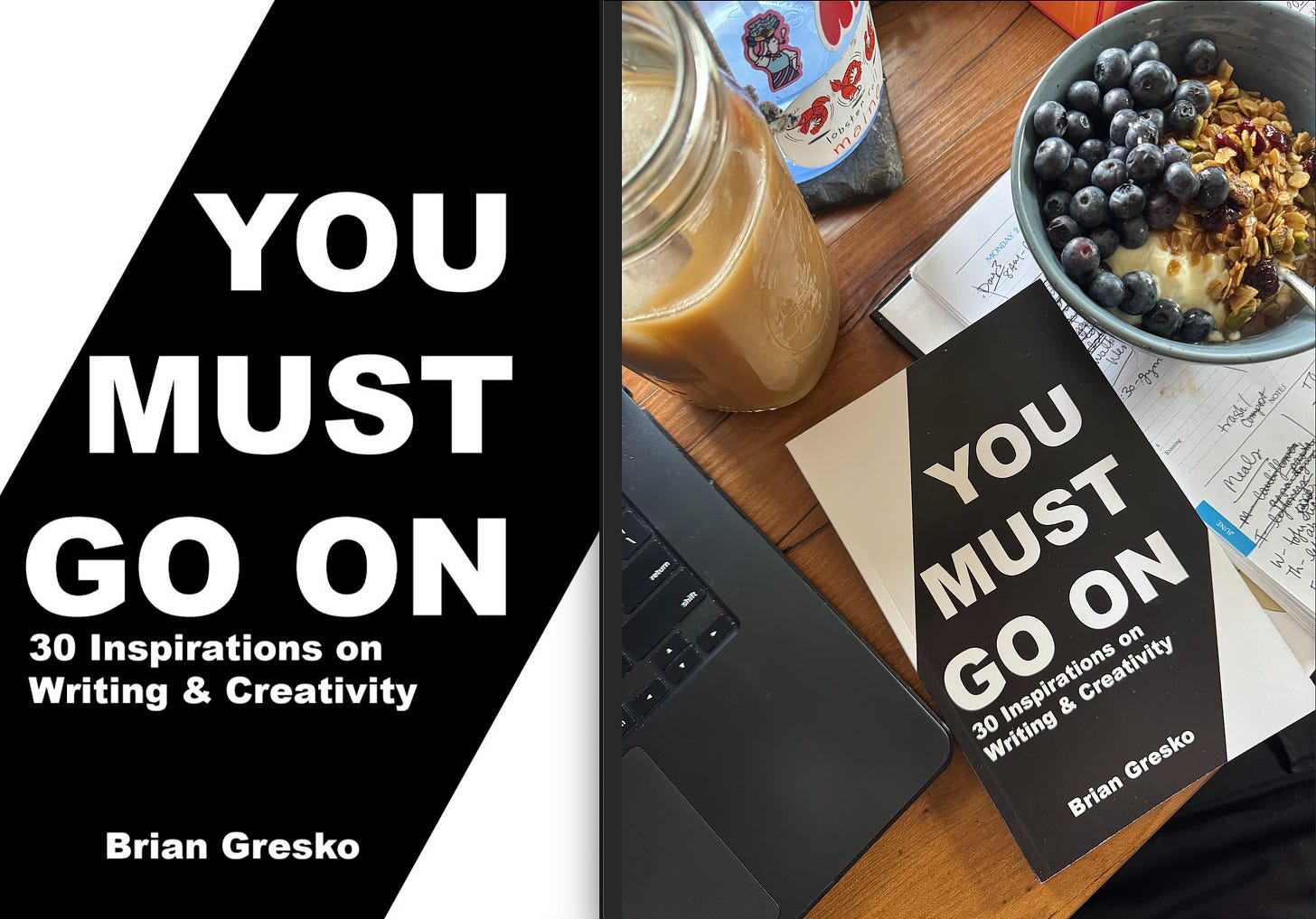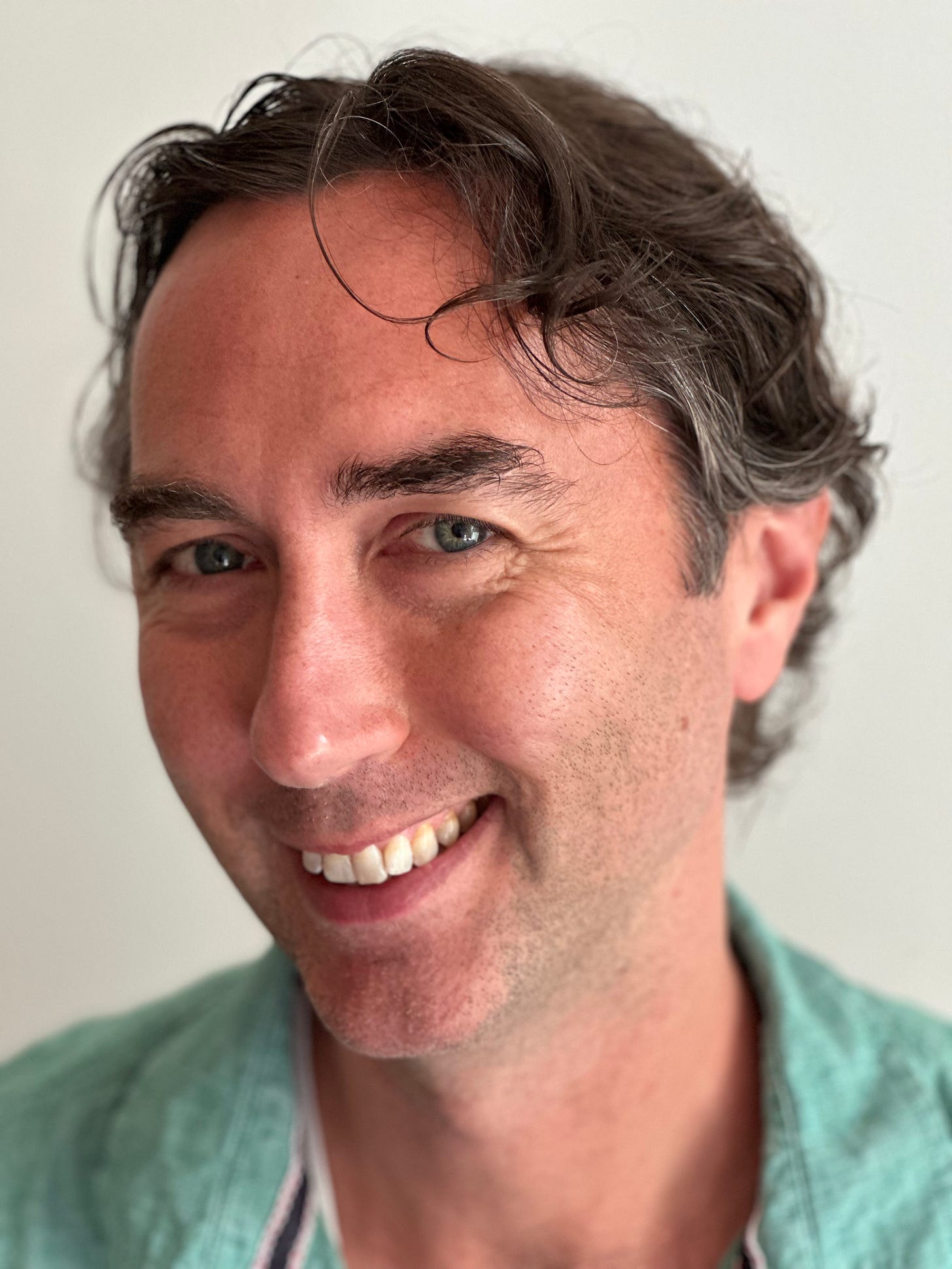Instrument, Surface, Setting, Story: An Interview Series on Creative Tools and Spaces with Brian Gresko
"I like that space to be as unformed and wild as possible. Open to possibility."
Recently during a journaling workshop I participated in, the conversation turned to writing supplies and which journals, pens, and writing environments each of us prefer. The conversation went on for almost an hour and I realized once we’d moved on that I could have listened to other writers and artists talk about their chosen supplies all night. I decided to reach out to the creatives in my life to ask them about four components of their creative process, and I am so grateful for the generous responses they provided. I can’t wait to share them all with you.
Instrument: What writing tool do you use? Pen? Pencil? Tablet? Or do you go old-school with a quill and ink?
I know this is verboten for the many pen fetishists out there, but when writing by hand I prefer an old school ballpoint pen. If the pen is a spring-loaded retractable guy, I will drive me and everyone within earshot to distraction by clicking on it to no end. If it’s a little rubbery, like those adorable pens from Muji, I’ll obsessively run my fingernails up and down it. I have a bit of a finger fidget! My favorite kind of ballpoint pen is one of those old school Bic ones, with the blue rocket-shaped top. I’m a working class kid, and it never got much fancier than that for me growing up. Plus there’s nothing on them for me to play with.
Honestly, though? I’m not a big fan of my handwriting, which is a weird amalgamation of cursive and printing, and looks very childish to my eyes. My preference is to type, always. When I was in middle school, my next door neighbor, who was a teacher and took a godmotherly interest in my intellectual and artistic development, gave me her old electric typewriter when she upgraded to what was then the cutting edge technology of a word processor. So from almost the start, I wrote creatively on a keyboard. That remains my favorite, and typical, way to write.
Working by hand is something I do in revision – I always, at some point, print out a piece to see it on paper and mark it up – or when seeking a new perspective or approach, or when journaling in the most personal of ways.
Surface: What do you write on? A lined paper journal? Dotted? Grid? Do you flip the page sideways or write long-ways?
Depends on what I’m doing! For my personal journal I prefer either unlined blank pages or gridded graph paper, because I usually just jot down fragments and lists, and I often draw in there too.
I like that space to be as unformed and wild as possible. Open to possibility.
For my more professional journal, where I make to-do lists and sometimes write freehand, I like a lined composition notebook – along with those ballpoint pens, this is basically what I used for many years in elementary school. I keep stacks of loose leaf paper around too, for the same reason.
On the computer, I’ve begun using google docs a lot, but for creative work I mostly keep it off the cloud and away from the digital surveillance state and AI bots. I write in Libre Office, which is a free, open source version of Word. I’ve also gotten into using the Notes app on my phone, especially when I’m on the go, or struck with an idea in the middle of the night, as I often am.
Setting: Where do you create? An office? From bed? On the couch? Is it silent, or do you need background noise like music (with or without lyrics)?
Currently I’m in my book-lined studio sitting next to my terrier on a comfy, well-worn red armchair I inherited from my parents about twenty years ago when they upgraded their furniture. I realize now that this chair is continuing my trend of using old things from my childhood when writing! It’s not surprising, really.
That childhood state of wonder and excitement is something I strive for when creating, that sense that anything can happen in this world I’ve envisioned in my head. I want to be as free and playful as possible, and tune out, if I’m able, anything I know about publishing or readership or marketplace. I write first and foremost to please only myself.
That armchair is my favorite place to write from, but I shift location based on what I’m doing, or what part of the process I’m at. I have a crappy small desk I got when I first moved to Brooklyn back in the late nineties where I do more business-y work, and I also like revising at the dining table, and freewriting while propped up with pillows in bed. Similarly, I change whether I’m listening to music or not based on my intentions. Generating new work tends to happen best for me in silence, while revising requires music, particularly with a beat.
Right now I’m listening to DJ Shadow’s classic turntablist masterpiece, Endtroducing….., which is a perennial favorite.
Story: Describe your perfect writing day in three sentences or less.
I have breakfast with my family then say goodbye and head to my studio, where I write for about two, maybe two and a half hours.
I break to run around Prospect Park, eat lunch, shower, and nap. Then I get in a couple more hours of work before it’s time to walk the dog and enjoy cocktails with my spouse!

Brian recently released a limited run of their new book on writing and creativity, You Must Go On: 30 Inspirations on Writing & Creativity, and I know I’ll be turning to it often as I navigate the hills and valleys of my own writing life. Every writer would benefit from beginning their summer season by having a copy on hand. Order yours here!




How fun to hear the preferences of this super creative human. (Though, ballpoint pen! Brian!!?) Love this idea for a series!
Ooh yeah, I'm with you on ballpoints. Nice interview! And yay Writing Co-lab--discover of that is the best thing that happened to me in 2025